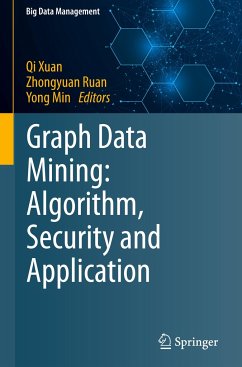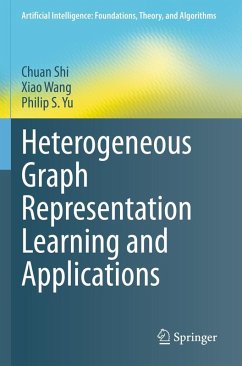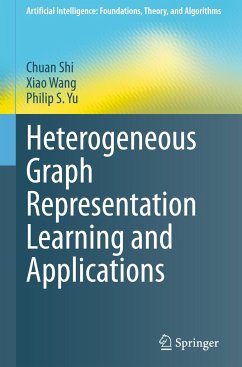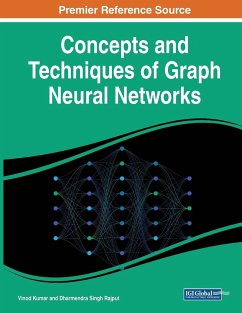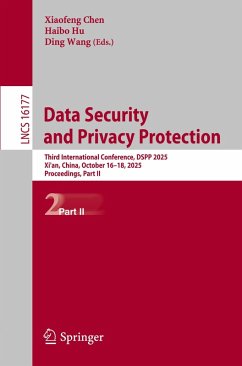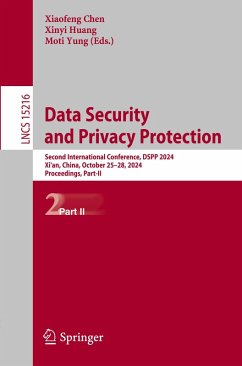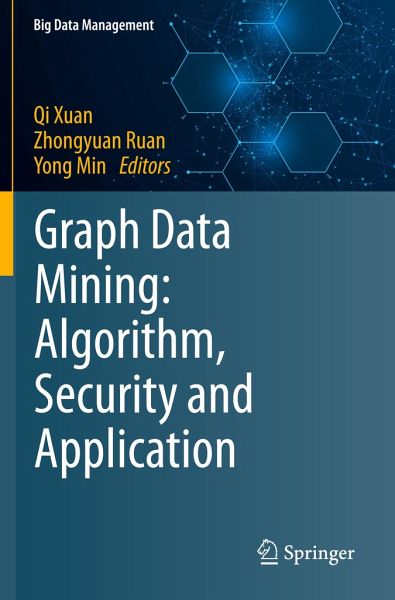
Graph Data Mining
Algorithm, Security and Application
Herausgegeben: Xuan, Qi; Ruan, Zhongyuan; Min, Yong
Versandkostenfrei!
Versandfertig in 6-10 Tagen
129,99 €
inkl. MwSt.

PAYBACK Punkte
65 °P sammeln!
Graph data is powerful, thanks to its ability to model arbitrary relationship between objects and is encountered in a range of real-world applications in fields such as bioinformatics, traffic network, scientific collaboration, world wide web and social networks. Graph data mining is used to discover useful information and knowledge from graph data. The complications of nodes, links and the semi-structure form present challenges in terms of the computation tasks, e.g., node classification, link prediction, and graph classification. In this context, various advanced techniques, including graph ...
Graph data is powerful, thanks to its ability to model arbitrary relationship between objects and is encountered in a range of real-world applications in fields such as bioinformatics, traffic network, scientific collaboration, world wide web and social networks. Graph data mining is used to discover useful information and knowledge from graph data. The complications of nodes, links and the semi-structure form present challenges in terms of the computation tasks, e.g., node classification, link prediction, and graph classification. In this context, various advanced techniques, including graph embedding and graph neural networks, have recently been proposed to improve the performance of graph data mining.
This book provides a state-of-the-art review of graph data mining methods. It addresses a current hot topic - the security of graph data mining - and proposes a series of detection methods to identify adversarial samples in graph data. In addition, it introduces readers to graph augmentation and subgraph networks to further enhance the models, i.e., improve their accuracy and robustness. Lastly, the book describes the applications of these advanced techniques in various scenarios, such as traffic networks, social and technical networks, and blockchains.
This book provides a state-of-the-art review of graph data mining methods. It addresses a current hot topic - the security of graph data mining - and proposes a series of detection methods to identify adversarial samples in graph data. In addition, it introduces readers to graph augmentation and subgraph networks to further enhance the models, i.e., improve their accuracy and robustness. Lastly, the book describes the applications of these advanced techniques in various scenarios, such as traffic networks, social and technical networks, and blockchains.





